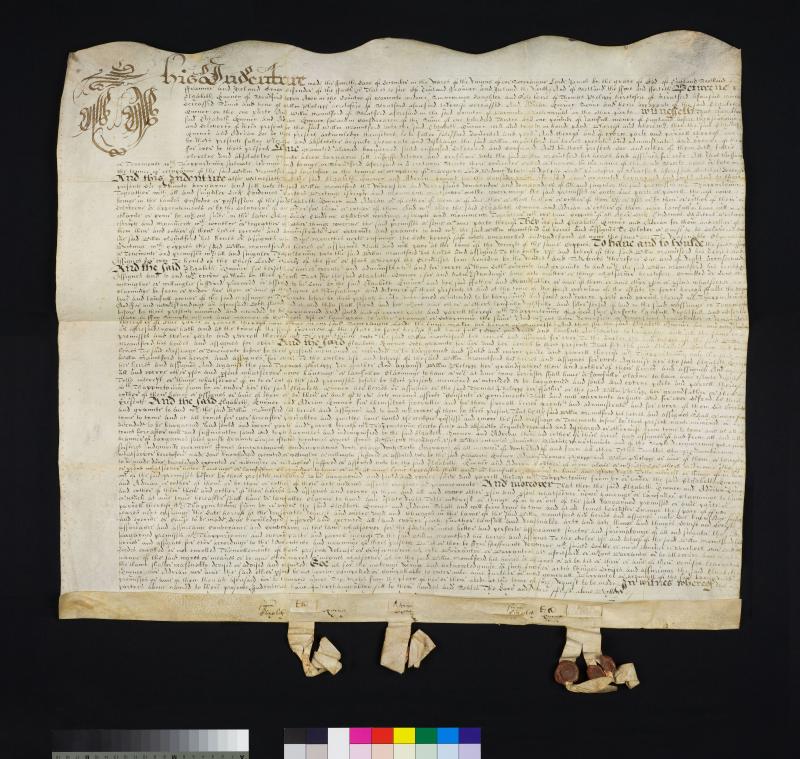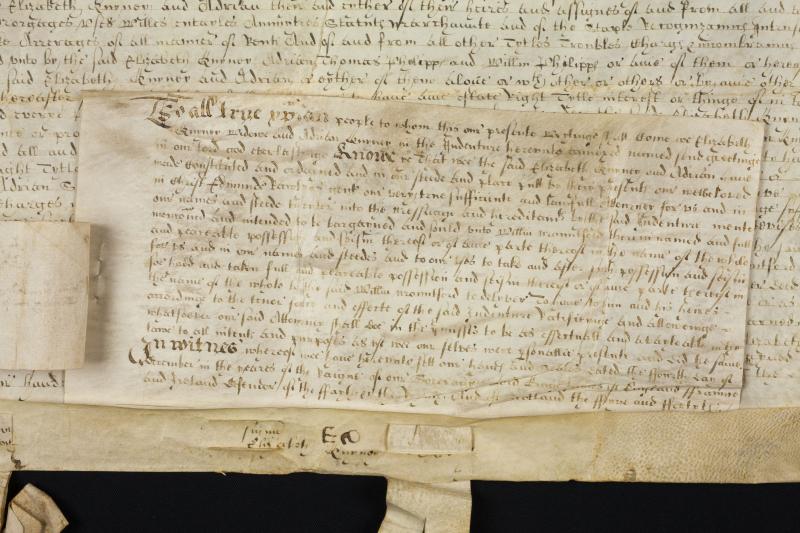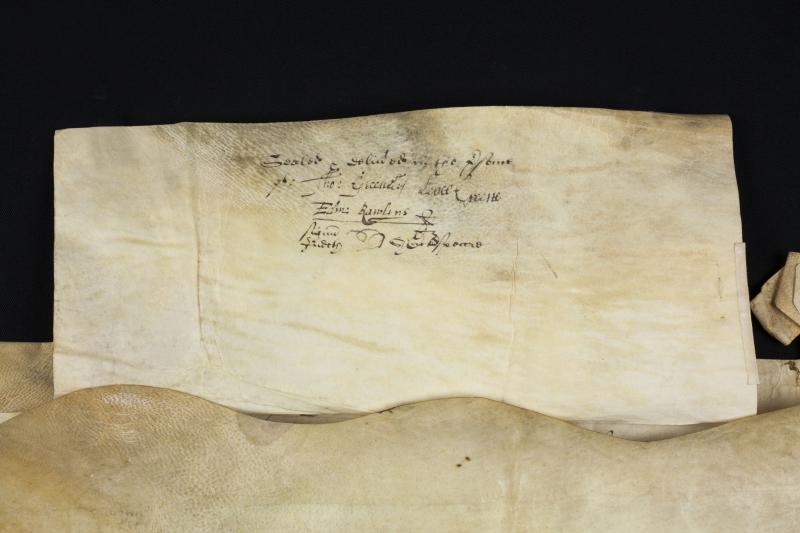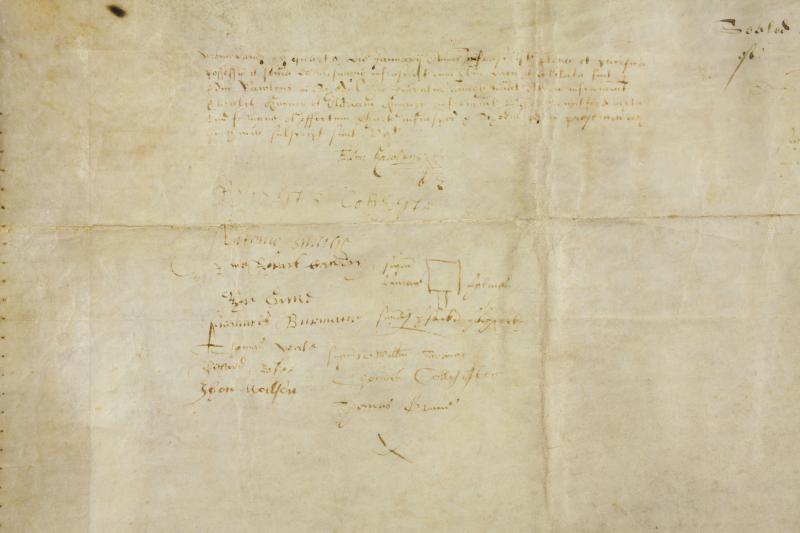Reproduced by permission of Shakespeare Birthplace Trust
Terms of use
The Shakespeare Birthplace Trust has graciously contributed images under a Creative Commons Attribution NonCommerical ShareAlike 4.0 International license. Visitors may download, link to and cite the images for personal research only. Any further use, including, but not limited to, unauthorized downloading or distribution of the images, commercial or third party use, is strictly prohibited. Visitors must contact the Shakespeare Birthplace Trust to request additional use, at: images.scla@shakespeare.org.uk
Document-specific information
Date: December 4, 1611
Repository: The Shakespeare Birthplace Trust, Stratford-upon-Avon, UK
Call number and opening: ER27/11
View online bibliographic record
Robert Bearman, "Judith Shakespeare, William Shakespeare’s daughter, witnesses 'by mark' a deed of conveyance," Shakespeare Documented, https://doi.org/10.37078/466.
Shakespeare Birthplace Trust, ER27/11. See Shakespeare Documented, https://doi.org/10.37078/466.
On December 4, 1611, by the deed shown here, the wealthy widow, Elizabeth Quiney, and her eldest son, Adrian Quiney, sold a sizeable house in Wood Street, Stratford-upon-Avon, to William Mountford. The deed has three tags with seals attached (shown here in the first image). Elizabeth Quiney made her mark on the first tag, described as “signum Elizabeth Quyney” but clearly intended to be her initials, “EQ,” and Adrian Quiney signed across the second tag (shown in the second image). Both then signed again, Adrian across the third tag and Elizabeth where incisions had been made for a fourth tag which was never attached (shown in the third image).
The names of the four witnesses to the sealing of the deed were added on the back of the document (visible in the center panel of the fourth image, though today much faded). Three of them sign, namely the attorney, Edmund Rawlins, Thomas Greene, another attorney (and the Corporation steward), and his wife, Lettice. Judith Shakespeare, William Shakespeare’s daughter, simply made her mark (“signum Judeth Shackespeare”) intended to represent her initials “JS”. For clearer images of the signatures, see the sixth image.
On the same day, by a separate document attached to the main deed, the Quineys appointed Edmund Rawlins to “deliver seisin” (the formal procedure to transfer freehold property) of the house to Mountford (shown in the fifth image). The same four witnesses, including Judith, also attested this document (shown in the sixth image).
The “delivery of seisin” took place a month after the deed was witnessed, on January 4, 1611 and details of this event were added on the back of the main document (shown in the seventh image). Fourteen men attended, headed by Edmund Rawlins, three of whom made marks. A further paper note was fixed to the main document, certifying that the transaction had been made the subject of a final concord acknowledged in Court of Common Pleas but not until Michaelmas Term 1617 (shown in the eighth image).
Given that the Greenes were lodging at New Place in September 1609 and likely to remain there for at least twelve months, it is possible that Thomas Greene, probably acting for the Mountfords, called on Judith and Lettice to witness the conveyance because they were currently all living in the same house. A further link between the parties, of course, was Judith’s marriage four years later to Elizabeth Quiney’s third son, Thomas.
Written by Robert Bearman
Last updated May 19, 2020


















